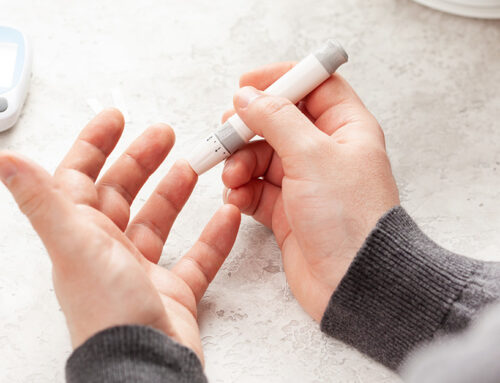
Modern life inflicts constant assaults on our bodies in the way of industrialized foods, environmental toxins, chronic stress, lack of sleep, and even electromagnetic frequencies (EMFs) from cell phones and computers. These assaults can trigger autoimmune diseases such Hashimoto’s hypothyroidism. Our best defense to protect health and repair damage is to shore up glutathione, the body’s master antioxidant.
Although the body naturally makes and recycles glutathione, modern life can overwhelm this system, depleting us of this vital compound. When glutathione is low the body is more vulnerable. Your risk for developing Hashimoto’s hypothyroidism rises, and low glutathione makes it difficult to manage the disease. Plentiful glutathione is necessary to manage Hashimoto’s hypothyroidism.
Glutathione as a supplement is not well absorbed by the digestive tract. Fortunately, many nutritional compounds act as building blocks to glutathione, and can help raise and maintain its levels inside and outside of cells. You can also obtain glutathione intravenously.
Boost glutathione to manage Hashimoto’s hypothyroidism
Below are some of many nutritional compounds that have been shown to boost glutathione levels and can help manage autoimmune diseases such as Hashimoto’s hypothyroidism:
- N-acetyl-cysteine is a very bioavailable building block to glutathione.
- Alpha lipoic acid helps recycle glutathione already in the cells.
- Milk thistle boosts glutathione.
- Methylation nutrients–methyl folate (5-MTHF), methyl B6 (P5P) and methyl B12 (methylcobalmin)–are methyl forms of B vitamins can help boost glutathione production and recycling.
- Selenium helps the body produce and recycle glutathione.
- Vitamin C help increase glutathione levels.
Diet and lifestyle factors can also affect your glutathione levels. Sulfur-rich foods such as garlic, onions, broccoli, kale, collards, cabbage, cauliflower, and watercress can help boost glutathione. If you can tolerate dairy, whey protein has been shown to increase glutathione (choose bioactive, non-denatured, non-pasteurized, and non-industrially produced whey). Exercise also boosts glutathione; get aerobic exercise daily (such as walking) and strength train two to three times a week.
Preserve glutathione to manage Hashimoto’s hypothyroidism
One of the most important ways to maintain your glutathione levels is to reduce stress on your body. Glutathione’s job is to protect the cells, whether it’s from an autoimmune disease, sleep deprivation, or the toxic ingredients in scented detergents and fabric softeners. Healthy glutathione levels reduce your risk of developing chronic and autoimmune disease as well as food and chemical sensitivities. It is also helps better manage an existing autoimmune disease such as Hashimoto’s hypothyroidism.
Following are some strategies to prevent depletion of glutathione.
- Find out what your food intolerances are and remove those foods from your diet. Many people are not aware that they are intolerant to common foods, such as bread or cheese. An elimination diet or a lab test can help you determine which foods are stressing your immune system and taxing glutathione reserves.
- Eat an all-natural, whole foods diet. Processed foods and fast foods contain chemical additives, genetically altered foods, antibiotics, hormones, excess sugar, and other ingredients that are stressful to the body and deplete glutathione.
- Get enough sleep. Sleep deprivation is very stressful. If you have issues sleeping, it is often secondary to something else. Contact my office for help.
- Manage your autoimmune disease. An autoimmune or chronic disease, such as Hashimoto’s hypothyroidism, rheumatoid arthritis, or diabetes keeps the immune system on overdrive and damages tissue, depleting glutathione. Ask my office how we can help you manage your autoimmunity.
- Reduce your exposure to toxins and pollutants. Many common environmental chemicals are toxic to the body. They are found in shampoos, body products, household cleaners, lawn care products, and so on. We have enough to deal with in terms of pollutants in air and water, minimize your exposure to them in the home.
- EMFs are a source of “electrical pollution.” Cell phones, computers, WiFi, and other electronics are stressful to the body and exposure should be minimized.





